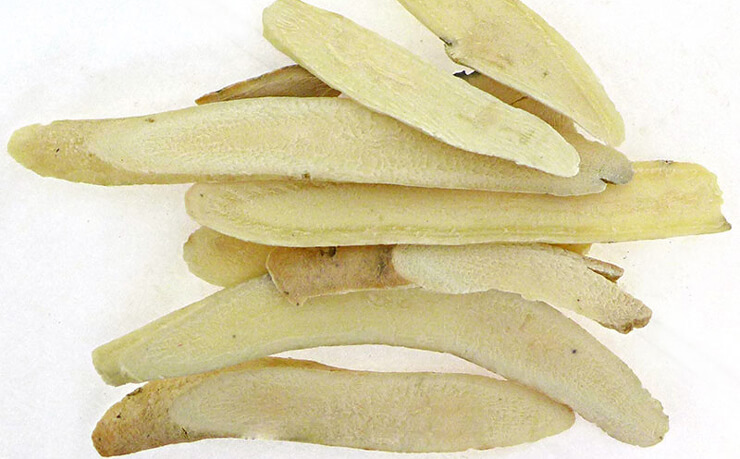The White Peony root belongs to the class of Paeonia lactiflora Pall. They are a perennial herbal plant belonging to the Ranunculaceae family. This type of root is widely cultivated throughout China. The major production areas are Zhejiang, Sichuan, and Anhui. Some other areas where it is cultivated are Guizhou, Shandong, Hubei, Hunan, Gansu, Henan, and Shanxi. The production in the Zhejiang region is termed as superior quality. The White Peony Extract is broadly used for medicinal purposes. This type of root is bitter and sour in flavor and mild cold. They mainly help in solving liver as well as spleen meridian problems.
What are the active components present in a White Peony Extract?
They are rich in monoterpene glycosides like Oxy-paeoniflorin, Paeoniflorin, Albiflorin R1, Benzoylpaooniflorin, Paeoniflorigenone, Galloylpaeoniflorin, and much more. The root has several hydrolyzed tannic acids and other materials like Terpenoids, benzoic acid, Paeonol, etc.
What are the uses of White Peony Extract?
Enrichment of blood as well as regulation of menses
People who have blood deficiency can suffer from sallow complexion, ear ringing, dizziness, and other problems. These can be treated with a White Peony Extract along with Angelica root, Sichuan lovage rhizome, Rehmannia root, and angelica root. This blood tonic effect can be powerful if processed Fleeceflower root, as well as donkey-hide gelatin, is added in the process. This extract is often used for the regulation of menses.
So, when this extract works with processed angelica root, Rehmannia root, baical skullcap root as well as donkey-hide gelatin, excess menses or early periods arising due to virtual heat can be relieved. When it is used with Sichuan lovage, peach kernel, and Chinese safflower, scanty menses or late periods caused due to blood deficiency can be solved.
The root is very helpful in providing relief from menstrual pain when combined with corydalis rhizome and processed nutgrass flatsedge rhizome. For other problems like dysfunctional uterine bleeding, they may be used along with angelica root, Rehmannia root, donkey-hide gelatin, and Yerbadetajo herb to treat it entirely.
Treatment of excessive sweating
This extract works with fresh ginger, cassia twigs as well as Chinese dates for the treatment of excessive sweating. Excessive sweating can weaken the superficial portion of the body because of cold and wind. In the case of severe symptoms, aconite root can be added as a remedy. For different sweating issues, the extract can work with other herbs such as Astragalus root, black soybean coat, Pseudostellaria root, blighted wheat, and oyster shell.
Relief to the liver and other problems
White Peony Extract is normally paired with licorice root for relieving various muscular spasms in the stomach, lower legs, intestines, diaphragm, face, and other internal organs. For instance, rib-side pain can be relieved by combining this extract with bitter orange, licorice root, and bupleurum root to soothe and relieve the pain. Cold pain in the abdomen can also be relieved and treated by combining the extract with angelica root, cassia twig, maltose, and licorice root for warming meridians, activating blood as well as providing relief from the pain.
Various other spasms that are related to excess cold can be treated effectively by using cassia bark along with this White Peony Extract. If it is related to excessive heat, then a baical skullcap can be used along with this herb extract for an efficient treatment. If there is any disharmony between the liver and the spleen, this root extract can be utilized with Ledebouriella root, dried tangerine peel, and Large head Atractylodes rhizome for relieving diarrhea and abdominal pain.
Dysentery is often considered as damp heat stored in the lower burner. This white root peony extract can be used with baical skullcap root, costus root, and golden thread rhizome as well as betel nut for relieving abdominal pain, diarrhea as well and tenesmus.
Enrichment of yin as well as the pacification of the liver
Hyperactive liver yang can lead to dizziness and headache. The White Peony Extract can work with Achyranthes root, Rehmannia root, oyster shell as well as ochre minerals for enriching blood as well as the pacification of liver. There can be excessive heat in the liver meridian which can generate internal wind and lead to delirium, fever, and convulsions. The extract can work with Gambir Vine, antelope horn as well as Rehmannia root to provide relief to the pain. This extract is also a common solution for yin deficiency.








